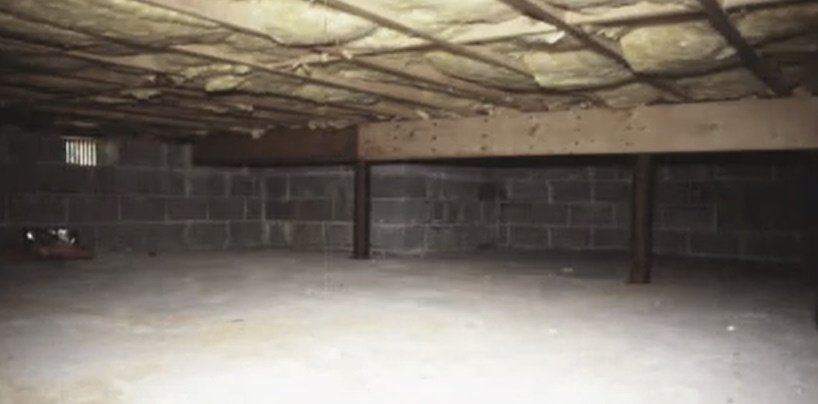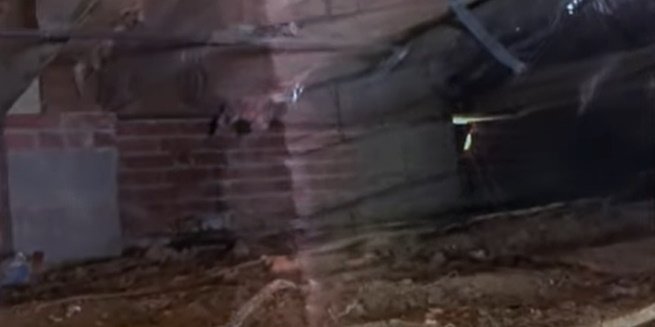
Is a crawl space considered a type of basement? Or are they two separate things? This question will be addressed in this article.
Crawl spaces are usually only high enough to crawl around in and store smaller belongings. They are also usually vented to outside air. On the other hand, a basement must be similar height to regular living space and sealed from the outside. Because of this difference, a crawl space is not considered a basement.
Contents
- What is a crawl space basement?
- What is the difference between a basement and a crawl space?
- Advantages of Basements
- Disadvantages of Basements
- Advantages of Crawl Spaces
- Disadvantages of Crawl Spaces
- Crawl Space and Basement FAQ’s
- Can you make a basement from a crawl space?
- How much does it cost to convert a crawl space into a basement?
- Do all homes have a crawl space?
- Is a crawl space safe during a tornado?
- Why are houses built with crawl spaces?
- Is it worth digging out a basement?
- Are crawl spaces bad?
- Do home inspectors go in crawl spaces?
- How much does it cost to finish a crawl space?
- Are vapor barriers necessary in a crawl space?
What is a crawl space basement?
Technically there are no crawl space basements because a crawl space and a basement are two different things. But a Crawl Space is similar to a basement, but usually only 3-4 feet deep and usually vented to the outside.

Some crawl spaces can be full-height like a basement or only 1 ft tall but these are much rarer.
What is the difference between a basement and a crawl space?
The main difference between a basement and a crawl space is that a basement is usually full-height, has a floor and walls, is sealed off from the outdoors, and is accessed via a typical door.
While crawl spaces are usually around half the height or less, has little or no floor or walls, and is not sealed off from the outside.
Advantages of Basements
One advantage of basements is that they provide protection from natural disasters like earthquakes, hurricanes, and tornados.
The basement helps anchor the house to the ground to protect its structure, as well as providing a safer place to hide during these dangerous events.
Basements can also provide well-insulated living space. This means they tend to stay cooler in the hot seasons/locations and warmer in the cool seasons/locations.
This is due to the basement being surrounded by ground on all sides.
Another advantage of basements is their low relative cost. Finishing a basement is an excellent and inexpensive way to add extra living space to a home, and digging out a basement to add an extra level to your home costs a fraction of the price of adding another floor to the top of your home.
Disadvantages of Basements
Basements are really superior to crawl spaces (and slab foundations) in every possible way.
The only real disadvantage to basements is that they require certain conditions to be installed.
Areas prone to flooding or with high water tables, such as beach houses or homes in the state of Florida, generally cannot have basements due to flooding issues.
Advantages of Crawl Spaces
One advantage to crawl spaces is that they can help keep the floor from getting to cold. This is due to the air pocket acting as an insulation between the house and the cold ground.
Another advantage is that building a home with a crawl space is much less expensive than building a home with a basement.
A final advantage to a crawl space is that it can give a home owner easy accessibility to the pipes and electric lines of a house for fixing, installations, alterations, etc.
Disadvantages of Crawl Spaces
The first disadvantage to crawl spaces is that they don’t provide as much protection during natural disasters.
While basements can anchor your home to the ground making it more durable during earth quakes and harsh storms, crawl spaces lack this anchoring effect.
They also do not provide a safe place to hide out during natural disasters.
A second disadvantage of crawl spaces is that they have a very limited use for storage.
Their small size means you can’t fit larger items in them, and their high humidity means you risk your stored items being ruined by mold or other moisture damage.
A last disadvantage to crawl spaces is that they require a similar amount of time to build as basements. Although you will save money on a crawl space home build compared to a basement home build, there will be little or no time saved.
Crawl Space and Basement FAQ’s
The following are some commonly asked questions related to crawl spaces and basements:
Can you make a basement from a crawl space?
Yes. To convert a crawl space to a full-height basement, you first remove the ground soil around the edges of the crawl space until you reach the depth you want. Then you install the walls, floors, insulation, etc. to finish the project.
How much does it cost to convert a crawl space into a basement?
It will cost approximately $20 thousand to $70 thousand to convert a crawl space into a basement depending on the size of your home and other home-specific factors.
Converting your crawl space into a full sized basement will increase its usefulness for storage and make it much easier to navigate.
For an additional $10 thousand to $30 thousand, you can fully finish your basement depending on home-specific factors (size, etc.) and the expense of your chosen materials.
Do all homes have a crawl space?
No. Some homes have full basements and others are built on slab foundations. Generally crawl spaces are found on older homes and homes in dryer climates where humidity isn’t an issue.
Is a crawl space safe during a tornado?
Tornadoes are extremely powerful and dangerous storms. Because of this, there is generally no 100% safe location within a home (other than bunker rooms which are specially made to be tornado protection). However, depending on how a home is constructed, the crawl space may be a safer place to protect yourself from a tornado.
Why are houses built with crawl spaces?
Houses are built with crawl spaces because they are usually cheaper than basements while still offering access to utility lines (pipes and electric), insulation from the ground, and some limited, but still useful, storage.
Is it worth digging out a basement?
This is a difficult question to answer as “worth” is a very subjective term. It will generally cost around $30 thousand to $70 thousand to dig out a basement, depending on the size of the home and other project-specific issues. Whether it is worth it or not depends on how much the homeowner values the additional space/utility of a basement.
Are crawl spaces bad?
The short answer is that it depends. For many homes, a crawl space is advantageous over a concrete slab because it offers storage, insulation, and access to utilities. However in some cases, specifically where moisture and mold are involved, a crawl space can be a detriment to a home.
Do home inspectors go in crawl spaces?
The short answer is yes, home inspectors generally go into crawl spaces. The reason is that much of a homes structure and utility systems are visible from the crawl space and, therefore, it is a necessary part of a home inspection.
How much does it cost to finish a crawl space?
“Finishing” a crawl space could mean anything from sealing it to fully converting it into a basement and finishing the basement.
Sealing your crawl space will cost around $2 thousand to $15 thousand dollars. Digging out your crawl space into a full basement will cost around $20 thousand to $70 thousand dollars, and fully finishing that basement will cost around $10 thousand to $30 thousand.
All of these prices are dependent on the size of your home and other house-specific factors.
Are vapor barriers necessary in a crawl space?
Vapor barriers are generally considered necessary in crawl spaces. Moisture in crawl spaces can cause severe damage to your home including wood rot, rust damage of pipes and other metal materials, and damage to your home’s electrical system. The vapor barrier protects your home from this moisture.
